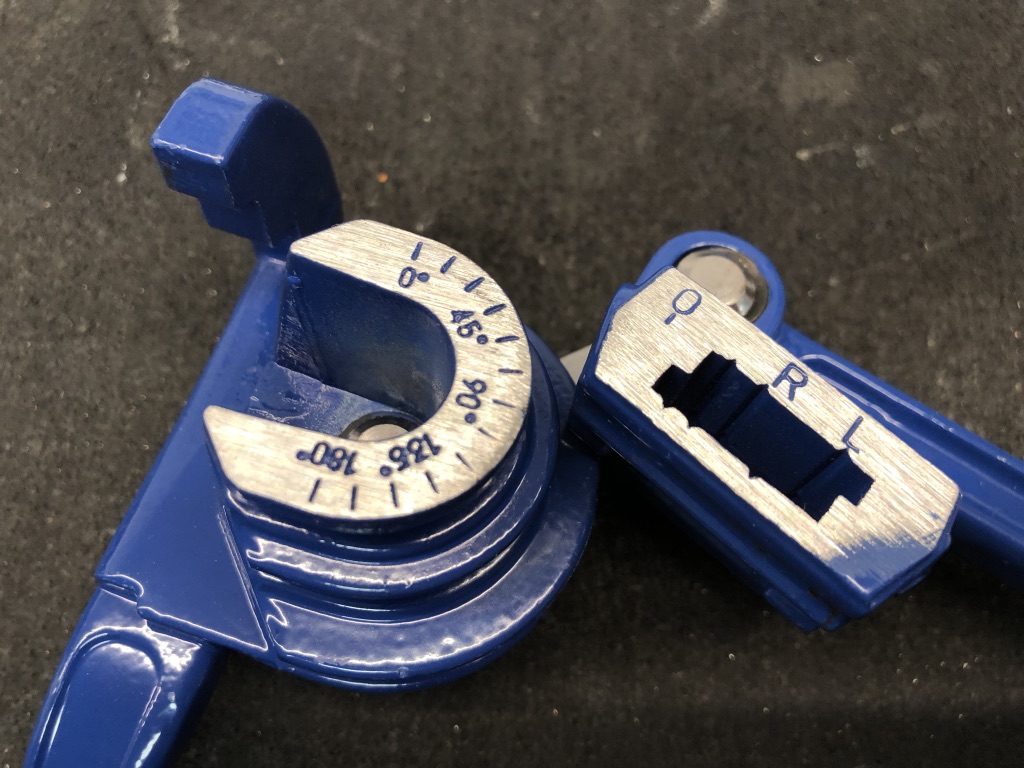-


In today's episode of "Don't Buy Cheap Tools"...
OK, time for today's rant...
Last week I made life unnecessarily complicated for myself when attempting to dial indicate my bellhousing with a cheap Amazon dial indicator gauge and magnetic base that never gave repeatable results and broke on the third use. I ended up buying a suitable tool and getting the job done with far less frustration.
Well, this is apparently a theme in my garage at the moment. I'm now starting to do some mock-up of brake and fuel lines (templating with Nicopp first before making the real ones out of stainless steel). I purchased several tools from Eastwood - flaring tool, tubing straightener, tubing cutter, deburring tool, and the tubing bender that can handle different tubing sizes from 3/16" - 3-8". You know the one... it's sold under a bunch of different names all over the place. Who wouldn't want a tool that can bend all the different sizes of tubing on the car, right?

All the Eastwood stuff is working beautifully except for that tubing bender, which has been an endless source of frustration and wasted tubing for me. I started by trying to make the section of tubing that connects the two front brakes... the one that "V"s at the front cross brace. I ended up scrapping two 5' sections of tubing as I couldn't get accurately placed bends with that tool. Accurate angles. Sure. Accurate position? Forget about it. In the photo above, you can see that it's darn-near impossible to figure out where the "0" "R" and "L" marks are for 4 different tubing sizes.
I spent some time studying up on how to accurately bend tubing on Youtube, and the common theme was to get a good quality tubing bender (duh). So I picked up two Ridgid 600-series tubing benders (model 38028 for 3/16" tubing and model 38043 for 3/8" tubing). Wow. What a difference. Now, I'm not suggesting that one necessarily needs to spend this much to get good results, but I will suggest that there are three key features on these benders that make them FAR more accurate than the other bender:
1) dedicated bender for a single size of tubing
2) a clamp that locks the tube in position before bending
3) ability to clamp it in a vice to work (this one is not absolutely necessary but makes life sooooo much easier).
Here's the 3/16" bender clamped in my vice making some practice bends. I'm amazed at how accurately I can bend with this thing. I'm sure that a master tubing bender could easily make do with the cheaper tool but for someone like me that's doing this for the first time unnecessarily handcuffing myself with a cheap tool was driving me nuts.
(Rant over)

MkIV Roadster build: Gen 2 Coyote, IRS, TKO600. Ordered 10/24/18. Delivered 1/29/19. Engine installed 8/8/21. First start 9/12/21. First go-kart 9/17/21. Off to paint 4/11/22. Back from paint 12/30/22.
Build thread here.
-
Post Thanks / Like - 0 Thanks, 1 Likes
 NAZ
NAZ liked this post





 Thanks:
Thanks:  Likes:
Likes: 




 Reply With Quote
Reply With Quote
